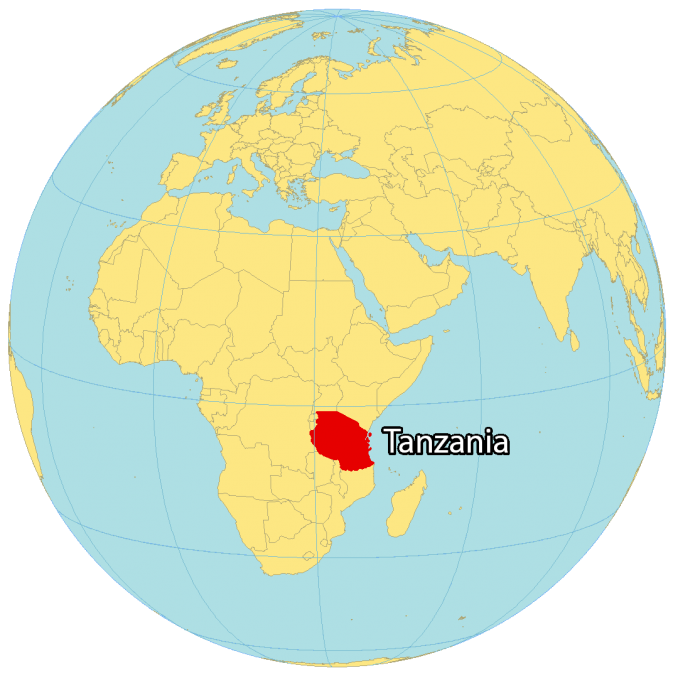About Tanzania (updated 2025)
Location
Tanzania is in Eastern Africa, bordering the Indian Ocean, between Kenya and Mozambique. The Kibaoni Primary School is approximately 75 kilometers west of Arusha, about 19 kilometers east of the town of Karatu.
Geography
Tanzania’s area is 945,087 sq km, slightly larger than twice the size of the state of California. The terrain consists of plains along the coast, a central plateau with highlands in the north and south. The climate varies from tropical along the coast to temperate in the highlands. Tanzania’s lowest point is at the Indian Ocean; its highest point is Africa’s highest peak, Mt. Kilimanjaro, at 5,895 m. Tanzania is bordered by three of the largest lakes on the continent: Lake Victoria (the world’s second-largest fresh water lake) in the north, Lake Tanganyika (the world’s second deepest) in the west, and Lake Nyasa (Malawi) in the southwest.

Economic Overview
With a population of over 70 million, Tanzania has seen steady economic growth in recent years, driven by agriculture, mining, tourism, and infrastructure development. Despite this progress, Tanzania is still classified as a lower-middle-income country by the World Bank and ranks among the world’s least developed nations on the Human Development Index, reflecting ongoing challenges in health, income, and education.
Agriculture remains the backbone of the economy, employing the majority of the population through small-scale farming. While sectors like natural gas, construction, and tourism are expanding, wealth and opportunity are unevenly distributed. In rural areas especially, families face significant economic hardship, and children’s access to quality education is often limited by poverty, under-resourced schools, and infrastructure gaps.
Globally, Tanzania is part of the group of Low-Income and Least Developed Countries (LDCs) receiving special attention and support from international donors and development partners. Its economic future depends greatly on continued investment in human capital—especially in education.
Tanzania’s Vision 2025 outlines the country’s goal of becoming a middle-income nation with a well-educated and skilled population. But this vision cannot be achieved without addressing the foundational needs of students today. Many schools still lack adequate classrooms, books, clean water, and even daily meals.
Your support helps bridge this gap. By investing in schools, you’re not only providing essential resources—you’re helping to lift entire communities and giving children the opportunity for education.
Education
Tanzania’s education system has three different levels: basic, secondary and post secondary. Basic education consists of one year of pre-primary education and seven years of primary education. Secondary education consists of four years of junior secondary education and two years of senior secondary education. Children at Tanzania’s post secondary level of education spend three or more years in school.
The education system in Tanzania is viewed as the source of livelihood options. An education provides people with skills, confidence and access to further training. Typically, those who are educated have better access to employment, can be self-employed, have a better chance of a consistent income and better access to health care and nutrition.
Population
As of 2025, life expectancy in Tanzania is approximately 67 years. The country has a very young population, with 44% under the age of 15, and an average birth rate of 4.4 children per woman. An estimated 4.5% of the population is living with HIV/AIDS. The adult literacy rate is just over 82%.
Kiswahili (Swahili) is the official national language, while English is widely used in commerce, government, and higher education. Arabic is commonly spoken in Zanzibar, and over 100 local languages are spoken across the country.
